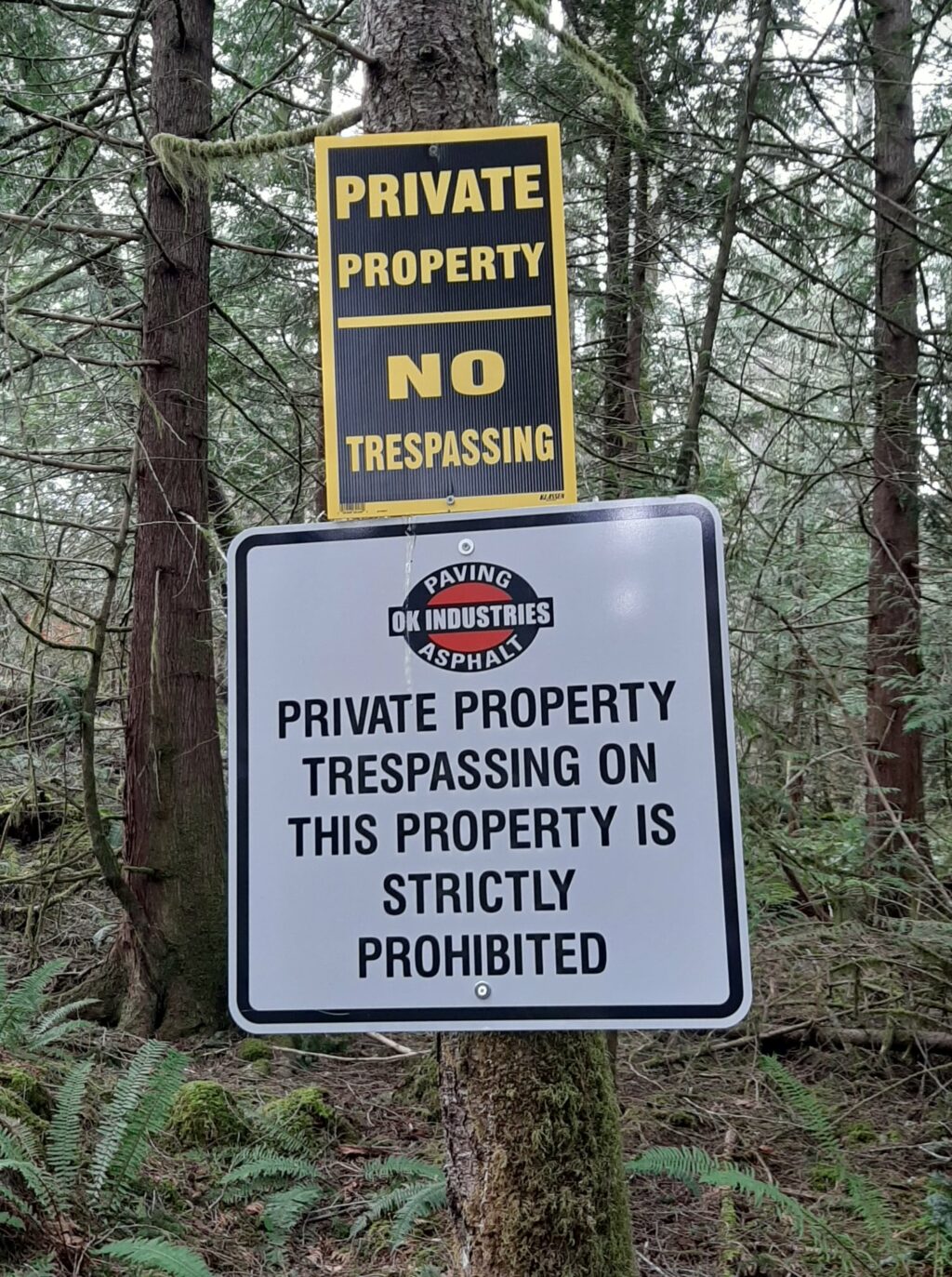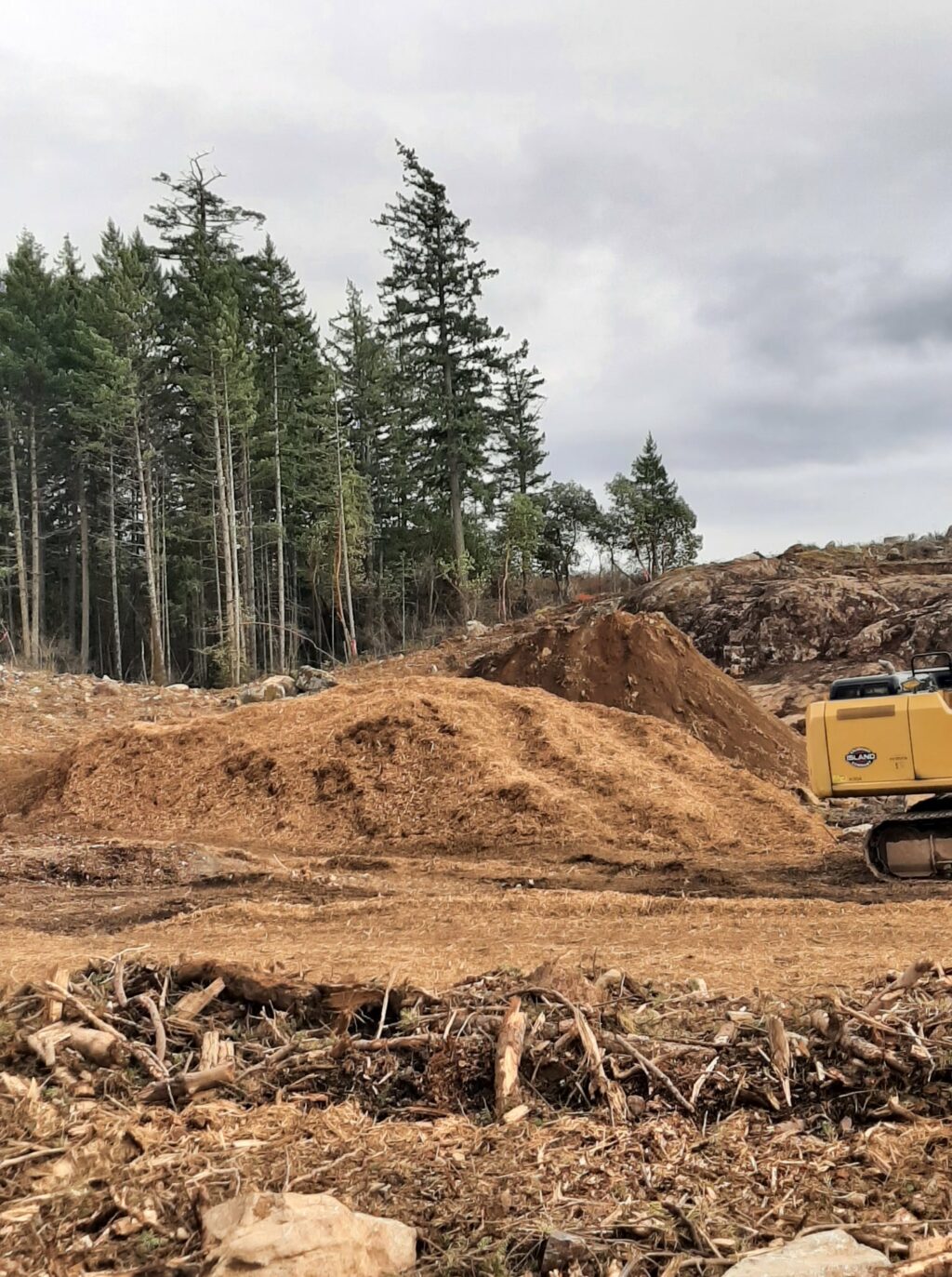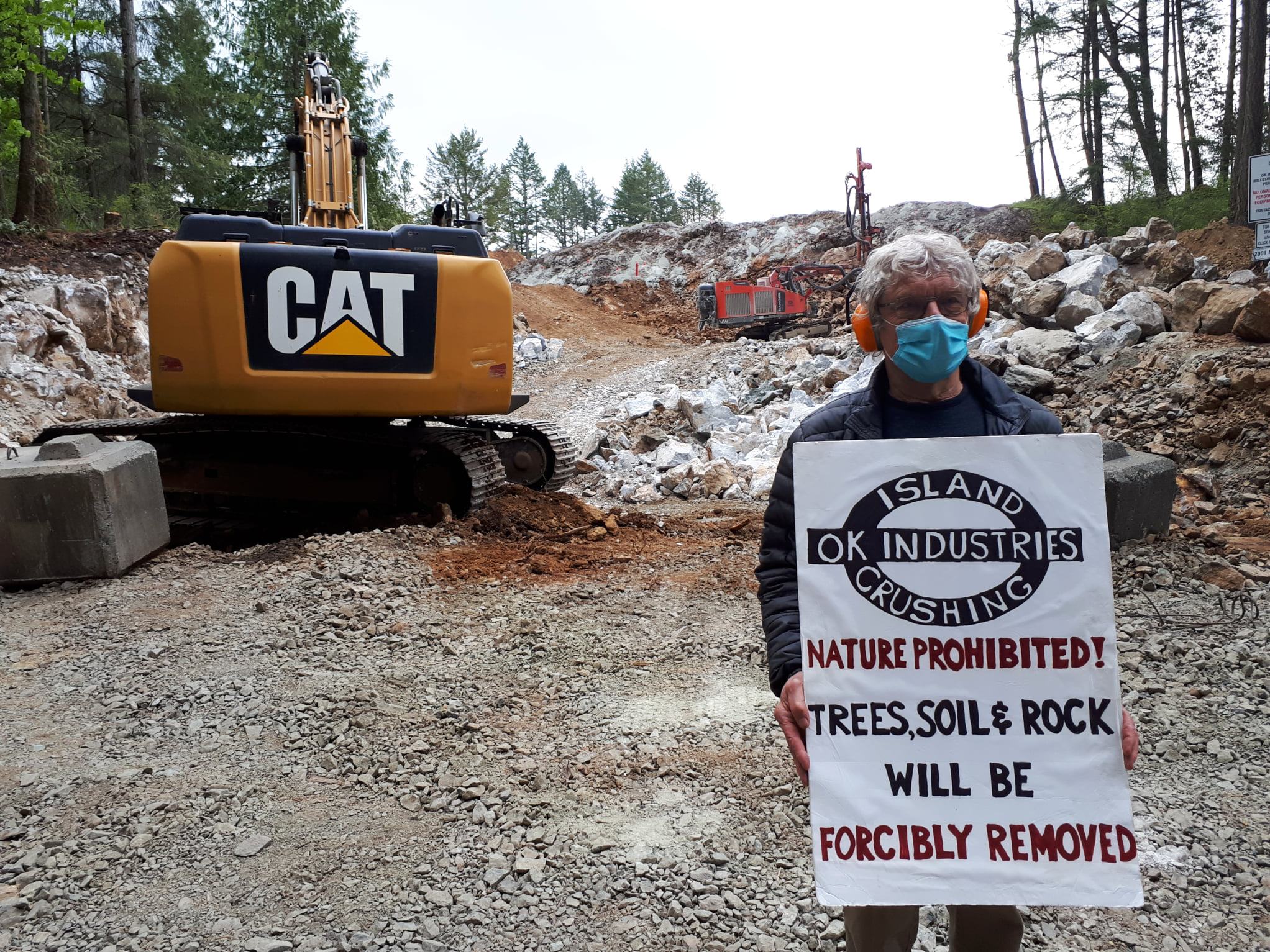
A massive Rockies real-estate project wins another court battle. Opponents will keep fighting it
Residents and nearby First Nations wanted a new environmental impact assessment of the contentious project....
In early 2021 Karen Burns noticed trees were coming down at the site of a contested rock quarry project in a nature-rich, primarily residential area just northwest of Victoria, B.C., known as the Highlands. The next day, Burns, a former District of Highlands councillor, showed up at the site entrance, located on the southern side of the Highlands on Millstream Road, with a protest sign in hand.
She’s been protesting on the frontlines of the project nearly every day since. And now the battle against the quarry might — rather surprisingly — wend all the way to Canada’s Supreme Court.
Burns was still a councillor in 2016, when the District of Highlands council rejected the Victoria-based OK Industries Ltd.’s rezoning application to use the wooded 65-acre lot they purchased in 2015 for industrial use. But four years later, despite repeated and vocal opposition of the district, the B.C. ministry of energy, mines and petroleum resources granted OK Industries Ltd. a mining permit, overriding the concerns of the local community and giving the project a green light.
Since then, members of the citizen group Not OK, including Burns, have held daily protests at the quarry site, nearby at Thetis Lake Park, and dropped signs over the Trans Canada Highway to raise awareness. A community door-to-door petition opposing the project collected 1,000 signatures, representing nearly half of the district’s population.
“It’s been very disappointing in the way that the province could just override everything that we stand for out here,” says Burns, who moved to the Highlands two decades ago to be closer to nature. More than one third of the Highlands landscape is protected as park land.
The Highlands District Community Association (HDCA) has been leveraging any legal recourse available to reverse the province’s approval of the mine, including a challenge of a decision by Herman Henning, B.C.’s chief inspector of mines, to approve the quarry permit without considering the climate impacts of the mine.
In his assessment of the project, Henning observed that while Canada has passed “a non-binding motion to declare a national climate emergency in Canada,” climate change was not an issue of relevance under B.C.’s Mines Act.
Last month, the B.C. Court of Appeal agreed, rejecting the district’s case because provincial mining legislation does not require climate change to be considered when making decisions to approve mining projects.
“This is a submission that seeks a legislative response to a problem of global magnitude, but provides no basis for this court to intervene,” judge Barbara Fisher stated in her ruling. “While climate change is no doubt an important issue, it is not a key element in the text or purpose of the statutory scheme under the Mines Act.”
On Thursday, the Highlands District Community Association asked the Supreme Court of Canada to weigh in on whether or not B.C. officials can ignore climate change when approving mining projects.
“Our Supreme Court of Canada case asks whether B.C.’s mines inspector can decide that climate change is irrelevant in assessing mining projects,” association chair Scott Richardson said in a statement. “Should B.C.’s mining legislation be interpreted to make climate change analysis and mitigation a mandatory requirement of the mine assessment process?”
Richardson notes in a press release that the association board unanimously passed a motion asking the Supreme Court to rule on the question as the temperature in the Highlands reached a record 41 degrees C.


“The whole world is waking up to the fact that climate change is affecting all of us in disastrous ways, yet our governments haven’t acted to change legislation to curtail climate change in step with our common interests and international commitments to reduce greenhouse gases,” Richardson said.
The controversy is moving the spotlight from the quarry project to the pitfalls of B.C.’s outdated mining laws, which organizations from across B.C. and beyond have been pressuring the government to modernize for years.
Set within the context of unprecedented heatwaves, drought and catastrophic wildfires, many are calling for new mining rules that align with the province’s desperate need to not only consider but combat climate change.
“They are just nowhere near what we would expect in the 21st century where we understand that we’re in a climate crisis,” says Deborah Curran, executive director of the University of Victoria’s Environmental Law Centre.
“We need reform in order to actually bring our antiquated mining laws up to a 21st century standard.”
Advocates and experts pushing for provincial mining legislation reform in B.C. say the province lags significantly behind other jurisdictions.
The Environmental Law Centre, which has been at the forefront of calls for mining reform in the province, has drawn specific attention to the downsides of B.C.’s aging mineral tenure rules.
Under B.C.’s “free entry” mining system, based on legislation originally written in the 1850s during the gold-rush era, any individual or company can register a claim anywhere on public or private land (except in particular protected parks or reserves) — without requiring consent from landowners or First Nations.
The law centre found that B.C.’s mining law “gives unique priority to mineral development over other land uses and rights.” Under the outdated system, “only a small portion of the provincial land base is designated “off-limits” to mining,” a report from the centre reads, noting that across the province, B.C.’s mining laws “create confusion and conflict by claiming to give mining rights preference over private property rights, Indigenous rights, local bylaws, land-use planning and the protection of sensitive areas.”
These systemic problems have been on full display in the Highlands, where local residents, community groups and council have tried every avenue to exercise more decision-making authority over the rock quarry project.
Climate change wasn’t the only tool Highlands community members used to attempt to thwart the project. The district council denied OK Industries Ltd.’s rezoning application, but were disregarded when the province granted their approval. The community also tried to assert local tree-cutting bylaws to halt the project, but the courts sided with the project proponents.
Curran says this is because mining is under provincial jurisdiction, and B.C.’s mining legislation does not consider local plans or bylaws in deciding where mining activity can occur.
B.C.’s mining laws do address environmental impacts through the protection and reclamation of land, water and cultural heritage resources on a case-by-case basis, but they do not mandate any specific considerations.
“We need mining law reform in order to actually name climate change as a factor that needs to be taken into consideration,” says Curran.
And it’s not just the province’s mining laws that need a refresh, she adds.
“The public concern and the public consciousness has so surpassed where we are with environmental law,” says Curran, citing similar gaps in forestry and watershed laws.
As Curran puts it, the current proponent-based system means developers might spend years justifying their projects to communities that don’t want mines, and communities shell out millions of dollars to fight the proposals.
Even the question of how significant the climate impacts of the quarry are was left to the community to determine.
In a media release, Richardson, from the Highlands District Community Association, said that in its rejection of the group’s petition to have climate change impacts considered under the Mines Act, the B.C. Court of Appeal acknowledged that climate change “could have been relevant” to the permitting decision. But the court noted neither the community association “nor anyone else presented to the mines inspector factual, comprehensive scientific evidence about potential climate change impacts associated with the project.”
The Court’s decision “reveals that the Mines Act unfairly places the onus on individuals and organizations such as the HDCA to prove climate change impacts of projects,” the release states.
Curran says eliminating B.C.’s “free entry” mining system is the first step in reforming the province’s mining laws in the context of the District of Highlands case.
Curran proposes a planning-based approach informed by biodiversity and ecological connectivity research, in which the province would enter into agreements with each Indigenous community or governing body about where mining activity may occur and where it will never be acceptable.

The reforms would mean that ore deposits in ecologically or culturally sensitive areas would likely never be developed, and mine developers would have an understanding of where mine applications might be successful, says Curran.
For District of Highlands residents opposed to the quarry, their five-year battle against the quarry persists.
Burns lists off worries about groundwater contamination from blasting activity, climate change and the loss in carbon sequestration that would result from logging the property, as well as the impacts of dust and noise on residents.
“It goes against our bylaws, community values and our policies. We pride ourselves in being green, sustainable and carbon neutral. And this would just be taking down a 65-acre forest that was fairly pristine, older second-growth, wetlands and just putting a great big pit there after extracting all those materials. We couldn’t stand for that.”
While Burns plans to continue attending protests of the project, she says the community is now working toward a boycott of OK Industries Ltd.’s paving services.
Get the inside scoop on The Narwhal’s environment and climate reporting by signing up for our free newsletter. On March 17, federal Conservative Leader Pierre Poilievre...
Continue reading
Residents and nearby First Nations wanted a new environmental impact assessment of the contentious project....

Growing up, Christian Allaire loved spending summers with his cousins in his grandma’s backyard, near...

B.C. previously allowed mineral claims without First Nations consultation. It was court-ordered to fulfill its...
